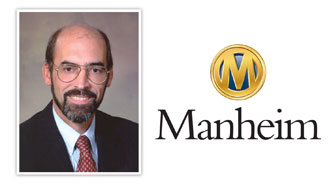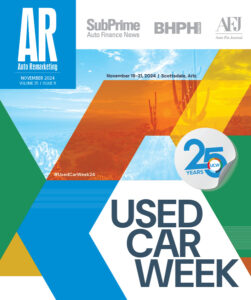Webb: Auto Retailing Outlook Brighter Than Other Economic Segments

While other segments of the economy might be posting sluggish growth, Manheim’s Tom Webb reiterated his upbeat assessment of where vehicle retailing is going.
In Manheim’s Auto Industry Brief for April, the company’s chief economist said, “Fortunately, growth for automotive retailing is both more certain and brighter. Autos have outperformed the overall economy since the recovery began, and the industry’s up cycle has not yet fully played out.”
Webb made those comments in light of some other economic indicators not being so rosy. He referenced Edward R. Murrow, who often mentioned, “Anyone who isn’t confused doesn’t really understand the situation.”
Webb followed up with, “That’s certainly apt for an economy where equity prices recently hit record highs, Treasury yields remained at record lows, and the dollar surged even as consumers retrenched, investment risks rose, and federal deficits became ever more intractable.
“The economy in the near term will likely continue to be characterized by slow growth, but predicting whether the next turning point will be marked by deceleration or acceleration is, at best, guesswork,” he went on to say.
Manheim noted federal numbers that showed March total retail sales slipped 0.4 percent. The company also pointed out core retail sales — which strip out autos, gasoline, and building materials — fell 0.2 percent in March following a 0.3-percent gain in February and no change in January.
“Weak consumer spending is clearly a reflection of the loss of the temporary payroll tax reduction,” Webb said. “The effects of budget sequestration, if any, will show up in April and beyond.
“March retail sales should have been helped by an early Easter and declining gasoline prices,” he continued. “In addition, tax refunds in March were $11 billion higher than a year ago, after being down $31 billion in the first two months of 2013.
“But, as reflected in the steep drop in consumer sentiment (now at the lowest level in nine months), consumers were in no mood to shop. Or, maybe more precisely, they lacked the means to shop,” he went on to say. “To maintain even the anemic pace of spending of late, people had to lower their savings rate below 3 percent in each of the first two months of this year.”
In wrapping up the April brief, Webb returned to the issue of gas prices, answering a question as to whether softening costs at the pump might goose vehicle sales even more later in the year. As for providing a jump-start to consumer spending, Webb indicated there are a couple of obstacles.
“Households are driving fewer miles, and the fuel efficiency of the fleet continues to rise. This means that, although gasoline price movements still have an important impact on consumer confidence and household spending, they are less of a factor than they were a year ago,” Webb said.
“Annual vehicle miles of travel peaked in November 2007 and then declined sharply during the recession, which is normal,” he continued. “However, what is abnormal is that the number of miles traveled has basically flat-lined throughout the recovery, and is still down 2.7 percent from its peak.
“And those fewer miles are being driven in more fuel-efficient vehicles,” Webb went on to say, referencing that the average fuel economy of new vehicles sold in March was 24.6 mpg, up 4.5 mpg from October 2007.
Continue the conversation with Auto Remarketing on both LinkedIn and Twitter.

 View The Latest Edition
View The Latest Edition

